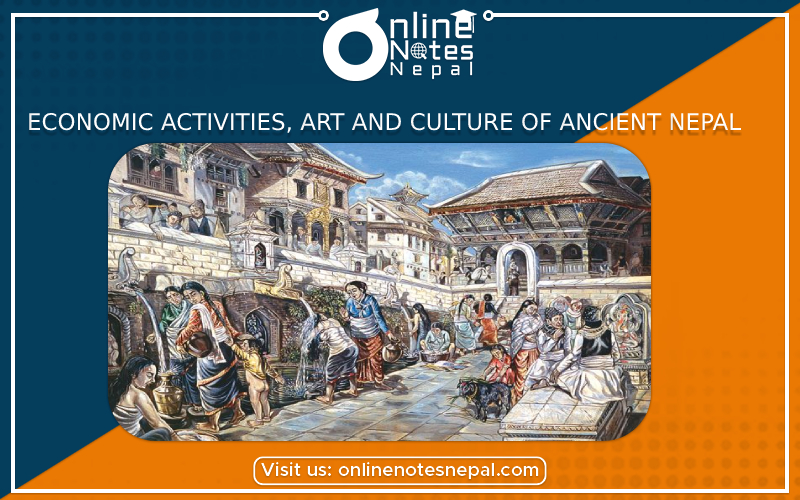Published by: Mandira
Published date: 27 Jan 2022

During the past times, the economic condition of Nepal was quite good. Agriculture, cottage industry, and trade were the main occupations of the people. There were three types of taxes that were used to impose on agriculture, cattle-rearing, and trade which was called Trikar. The Kirats raised others taxes as well. The tax office was called KutherAdda.
Nepal used to be the common route for trade between the North and the south. The Kirants made good trade relation among India, Tibet, China, and Sri Lanka. According to Kautilya's Arthashastra, Nepal exported wool, woolen goods, blankets, wood, musk,gold, etc to India. They also developed the cottage industry.
The Lichchhavis had a great growth in the field of trade. They introduced coins and changed the barter system into monetary economy. Mandev had introduced the first coin of Nepal and named Mananka. The state fixed separate land or pasture.
Though people reared cow, buffaloes, pigs, etc. more priority was given to sheep and yak, because they had a great demand. For external trade, people went in groups. Such groups were called Sartha and their leader was called Sarthwaha. The state had established the security post to protect the traders.
Sometimes the Lichchhavi king made people get theexcuse from some taxes. King Amshuverma's inscription of Tistung says, 'Excepts for the goods which are not allowed to export without the permission of the government like iron, fly-flapper, wool, musk etc. are exempted in other goods to the Tistungdwellers'.
Although there were a lot of good rules in economic sectors but nowadays due to the poor and ineffective management in the economy resulted in the decline of the economic system of a country. In ancient times, agriculture was the main occupation but nowadays people also involve in other economic activities too. However, the economic condition of ancient times was far better than the present.
Through the experience of human beings, they have discovered and created a new knowledge. They were able to express and share their feelings in different ways like drawing, painting, music, literature, etc.In the same way, every society has developed certain behaviour, habits, and values. They are passed on from generation to generation and become the way of life, that is called as the culture.
Along with the development of human civilization, the art and culture were developed in Nepal. The art and culture of Nepal can be discovered from the rule of Kirants although it was not well-organized. The period of Lichchhavi rulers in Nepal brought significant change in various fields. King Mandev in his dynasty extended the boundary of Nepal far and wide beyond the Kathmandu valley. Nepal became a dwelling place of different castes and creeds. The caste differentiation started in the society. The division of caste based on the occupation brought specialisation in skills, art and culture. Despite various religions, there was religious tolerance in the country.
The advancement of art and architecture were confirmed by the construction of big and artistic and creative palaces, houses, temples, stupas, etc began in the Lichchhavi period. Mangriha, Kailashkut Bhavan, the temple of Pashupatinath, the Changunarayan and the Buddhist Bihars of Ashoka. King Narendradev had a beautiful palace which had been appreciated in 'Tang description' of China. Chinese traveller Wang-Huen-Tche had said that he had never seen the beautiful palace than Kailashkut Bhavan. It was built in pagoda style, which was a pure original Nepalese art.
Not only the Nepalese architecture, Sculpture were also famous in that period. This image of Trivikram of Changunarayan temple,Harihar of Nakshal, image of Baraha of Chandol, etc. tells the excellence of Nepalese sculpture. Even today the people of the Kathmandu valley are popular for their craftsmanship. They were skillful in metal and wood works. The origin of those works was during the Lichchhavi period.
Most of the kings of Lichchhavi dynasty were fond of art and education. Therefore, there was a good development of language ,literature, astrology, Ayurveda, etc. Sanskrit was the major language. The traveller Huen-Tsang had mentioned about Shabda Bidhya of Amshuverma which was mentioned in Sanskrit.